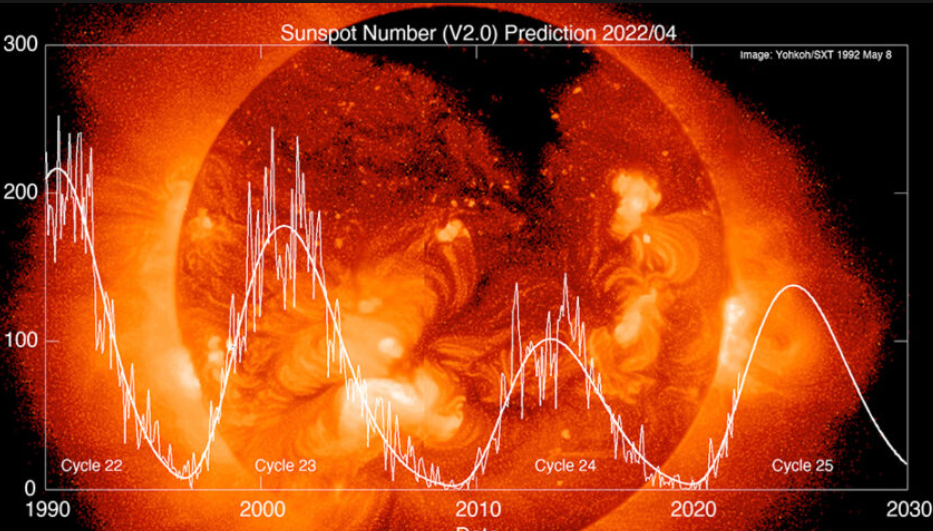Astronomers Develop New Method to Predict Solar Cycle Amplitude
Astronomers from the Indian Institute of Astrophysics (IIA) have developed a new way to predict the strength of solar cycles. This helps scientists understand solar activity better and improve forecasts for space weather, which can affect communication systems, satellites, and even astronauts.
What is a Solar Cycle?
The solar cycle is an approximately 11-year cycle during which the sun’s activity, including the number of sunspots, solar flares, and coronal mass ejections, changes. The strength, or amplitude, of each cycle has a big impact on space weather.
What is Space Weather?
Space weather refers to the conditions in space that are influenced by the sun. It includes:
Solar Wind: Streams of charged particles released from the sun.
Coronal Mass Ejections (CMEs): Large bursts of plasma and magnetic fields from the sun.
Solar Flares: Sudden flashes of increased brightness on the sun.
These solar activities can disrupt communication systems, damage satellites, and pose risks to astronauts.
Why Predicting Solar Cycles is Important
Predicting solar cycles accurately is crucial because it helps us prepare for the effects of space weather on Earth. Scientists use different methods to forecast solar activity, such as:
Dynamo Models: These are theoretical calculations based on the sun’s magnetic field.
Extrapolation Methods: These methods use past data to predict future activity.
Precursor Methods: These involve using current solar activity to forecast the next peak of activity.
Key Findings by IIA Researchers
Researchers at the Kodaikanal Solar Observatory found a link between the size of certain cells on the sun’s surface (called supergranular cells) and the number of sunspots that appear in the next solar cycle. They discovered that during the solar minimum (when activity is low), the width of these cells is related to how strong the next solar cycle will be.
Research Methods
By analyzing images of the sun’s chromosphere (a layer of the sun’s atmosphere) at a specific wavelength (393.3 nm), IIA researchers have come up with a simple method to predict solar activity. This advancement will improve our ability to forecast space weather.
About the Indian Institute of Astrophysics
The Indian Institute of Astrophysics (IIA), established in 1786, is one of Asia’s oldest astronomical research institutes. Located in Bengaluru, it was initially focused on developing telescopes. Over the years, IIA has made significant contributions to solar physics, the study of stars, and other observational research. The institute runs several observatories, including the Vainu Bappu Observatory in Kavalur, which has a 2.34-meter telescope. IIA collaborates with international research institutions and is involved in space missions like Astrosat. It also offers advanced courses in astrophysics and related fields.
Month: Current Affairs - August, 2024
Category: Science & Technology Current Affairs


